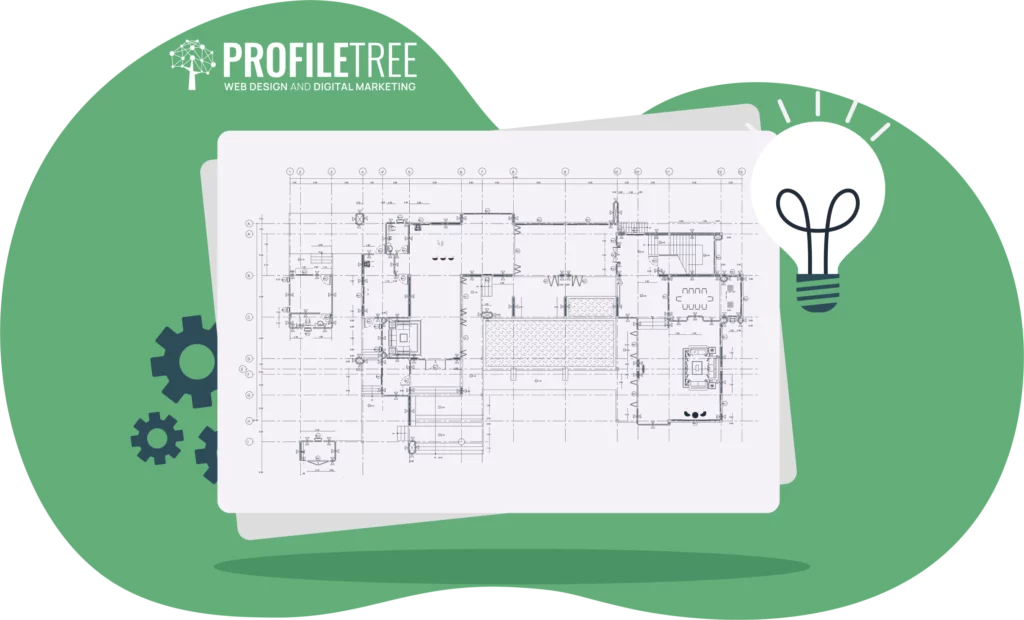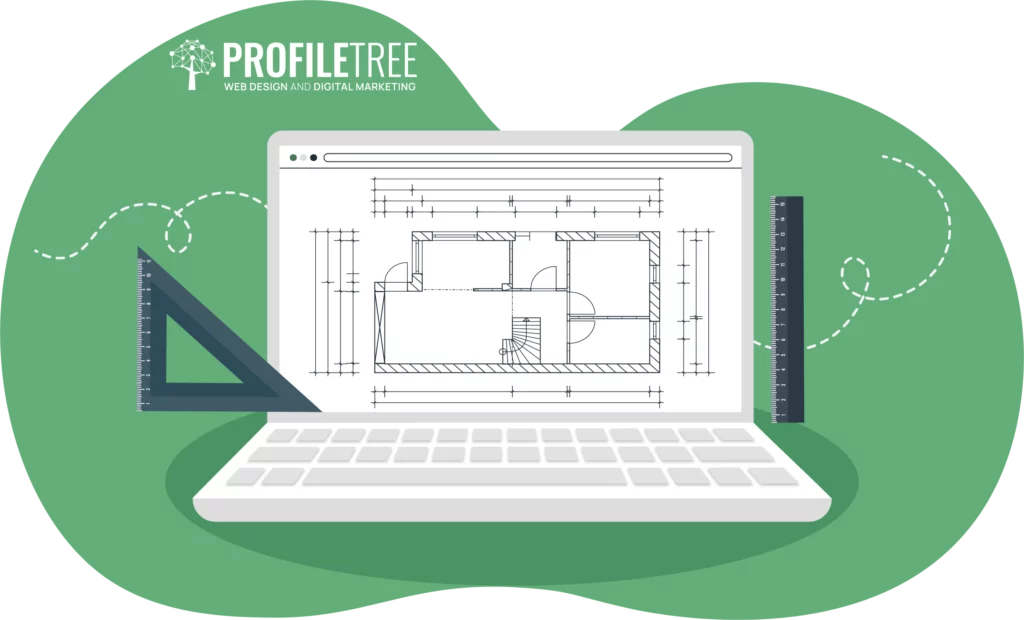You’ve probably encountered the word CAD before, but have you considered its remarkable significance in various sectors? Through a concoction of personal experiences and substantial research, we’ve unearthed that this technology lays the cornerstone for numerous forward-thinking industries.
Let’s embark on a journey exploring how CAD software is an essential tool and a phenomenal game-changer across diverse fields—from engineering and architecture to automotive design and, surprisingly, dentistry. Fancy uncovering the infinite potential where CAD takes centre stage? Keep reading!
Industries Where CAD Software is Essential
CAD (Computer Aided Design) software is essential in various industries, such as dentistry, automotive design, and engineering. It improves design accuracy and efficiency, making the process faster and reducing errors.
CAD enables streamlined collaboration among team members, even in different locations. It also enhances visualisation and simulation abilities, allowing designers to test their creations before building them. Let’s explore some industries where CAD software is used.
Dental Industry
In the dental industry, CAD software is used a lot. More than half of big dental labs use this tool, as it creates jobs faster and better. Using it, dental staff can do extraordinary things like 3D printing a tooth. It also helps make false teeth and braces fit just right.
An area that uses CAD software the most is prosthodontics, which makes crowns, bridges, and dentures. It also helps create precise and customised dental prosthetics and orthodontic devices. The future of fixing teeth will likely use CAD tools because they help people get their perfect smile quicker and easier.
Automotive Sector
Cars have many parts that need good design to run well. CAD software helps make this happen. It is a vital tool in car-making and design processes. This software gives precise shapes and correct data for all car parts.
For example, Siemens NX is a 3D CAD software used by car makers. With it, they can create every part of a car with great detail. More people are starting to use CAD tools in the Asia Pacific region because they see how useful they are for their work in the auto industry.
Engineering Industry
Engineers also use CAD software a lot in their work. This design software helps them build models of mechanical parts and systems. They can make these designs very exact and even change them on the computer without starting over. It is great for testing how different materials work together in a design. This tool is so essential that it is used in civil engineering and aeronautics.
Benefits of CAD Software

CAD software provides numerous benefits, including improved design accuracy and efficiency, streamlined collaboration, and enhanced visualisation and simulation abilities. Let’s delve into its benefits and explore what it can do in various branches.
Improved Design Accuracy and Efficiency
CAD software is a digital toolkit for designers that makes their design work better and faster. You can craft very accurate designs with it, and this means fewer errors in your work. Using it, you waste less time fixing mistakes and spend more time creating.
CAD also makes altering your designs quick and easy. This is great as it helps speed up design jobs even further. This is how CAD increases productivity while making sure the quality stays top-notch.
Streamlined Collaboration
Using CAD software makes teamwork easy. Even if people are far apart, they can work together on the same design. This is because of the cloud-based systems in CAD software. They let you share your layouts with anyone, anywhere.
So, CAD software helps teams work better and finish their tasks quickly. This means you can find mistakes and fix them fast. You can be in a different room or even in the same country. It’s also great for schools where students are working together on a project.
Enhanced Visualisation and Simulation Abilities
CAD software is an excellent tool for us, as it makes our designs come to life. You can see your ideas in 3D, and it feels so real. This is what we call visualisation. That’s not all. CAD also lets us test how the design would work in the real world first without making it. This is known as simulation.
Visualisation and simulation are excellent features that help engineers get their designs right before they build them for real. They are helpful, especially in product design, where seeing a lifelike model helps people understand better.
The Present and Future of CAD
The SaaS Awards showcase the latest advancements in CAD technology, highlighting its potential for growth and development in various industries. Join us as we explore the exciting world of CAD and its importance in different engineering disciplines.
SaaS Awards 2023
The SaaS Awards 2023 was a lot of fun. It was great to see who won. The winner of the Best SaaS Product For Engineering Management, PLM, Or CAD was the PrintStator Motor CAD platform by ECM.
SaaS Awards 2022
Many top performers showed up on the 2022 shortlist for these awards. Siemens NX was awarded Best SaaS Product for Engineering Management, PLM, or CAD. They are very good at what they do.
Sibros, another top name, also won a SaaS award in 2022. They got the Best SaaS Innovation in the Internet of Things (IoT) class. The ECM PCB Stator Tech also did well, and they won four categories. That’s pretty cool.
Latest Advancements in CAD Technology
CAD has come a long way and continues to evolve. One of the most significant advancements is the shift from 2D to 3D designs. This allows designers to make more realistic and detailed models. Another significant development in CAD software is the parametric designs, which make changes easily and quickly.
Emerging technologies like artificial intelligence (AI) and virtual reality (VR) are being integrated into CAD software. AI can analyse data and make design recommendations, while VR allows designers to immerse themselves in their creations for better visualisation.
These advancements have had a tremendous impact on product design workflows. They have improved efficiency by reducing errors and speeding up the design process. Collaboration has also become more accessible with CAD software, as multiple team members can work on a project simultaneously.
Potential Growth and Development in CAD Applications
The future of CAD looks exciting, with the potential for more application growth and development. Since 1982, CAD software has been evolving, and by 1995, it started reaching millions of users. Over the years, it has become more accessible and affordable to engineers and consumers who previously couldn’t afford it.
Technology advancements also have a significant role in shaping the future of CAD. Engineers can use six new and emerging 3D CAD technologies in various applications. These include topology optimisation and generative design, which help optimise designs and make them more efficient.
CAD enables engineers to develop, modify, and optimise the design process. It allows for accurate representations of objects or structures before they are built or manufactured.
Importance of CAD in Different Engineering Disciplines

CAD is crucial in various engineering disciplines, such as mechanical, electrical, and civil engineering. Let’s delve into some engineering disciplines and explore how this software helps engineers do their work fast.
Mechanical Engineering and Design
As a mechanical engineer, CAD is a crucial tool you use daily. It helps you design and develop various mechanical systems and components.
With CAD software, you can design 3D models of your designs, allowing you to visualise them before building them. This helps you identify any critical issues or improvements that can be made.
CAD also enables you to simulate your designs’ performance, saving time and resources compared to physical prototyping. Additionally, it makes the drafting process much faster and more accurate than traditional manual drafting methods.
Overall, CAD plays an essential role in mechanical engineering by improving design efficiency and accuracy while enabling better collaboration with other teams involved in product development.
Electrical Engineering and Design
Electrical engineering is a field where CAD software plays a crucial role. It helps engineers design and create various electrical systems, such as circuit boards and diagrams.
By using CAD, you can improve efficiency and productivity in the design process and collaborate with other engineers easily by sharing information and ideas through the software.
With CAD, you can also ensure that your designs are accurate and precise, reducing errors and saving time. Moreover, CAD can save costs by eliminating the need to build expensive prototypes. Overall, this software is essential for electrical engineers to create high-quality designs efficiently.
Civil Engineering and Design
CAD is also essential in civil engineering and design. It helps engineers create detailed project plans and construction blueprints with accuracy. With CAD, civil engineers can analyse processes, create detailed drawings, and ensure their projects are efficient and effective.
CAD software like AutoCAD allows us to represent our designs clearly and precisely. This streamlines the entire design process and ensures that everything is well-planned before we start building.
Conclusion
CAD software is essential in various industries, such as dentistry, automotive, and engineering. It offers improved design accuracy and efficiency, streamlined collaboration, and enhanced visualisation abilities. In engineering, CAD is crucial in different disciplines, including mechanical, electrical, and civil engineering.
With the latest progress in CAD technology and its potential growth in applications, it continues to be a vital tool for design processes in architecture, manufacturing, product design, and more.
FAQs
1. Which branches or industries require the use of CAD?
CAD (Computer-Aided Design) is commonly used in architecture, engineering, manufacturing, product design, and construction branches.
2. Why is CAD important in architecture?
CAD is essential in architecture because it allows architects to create detailed designs, make modifications quickly, visualise projects in 3D, and improve accuracy and efficiency in drafting.
3. How does CAD benefit engineers?
CAD benefits engineers by enabling them to create precise technical drawings, simulate the performance of structures or machines, and analyse stress points and other factors before production or construction begins.
4. In what ways does CAD support manufacturing processes?
CAD supports manufacturing processes by facilitating the design of digital models for prototyping products, generating machine instructions for production equipment, and streamlining the manufacturing workflow.
5. Can CAD be useful in product design?
Yes. By using CAD software during the product design process, designers can create detailed virtual models of their ideas, allowing them to test functionality and appearance before physical prototypes are made, which saves time and resources.


